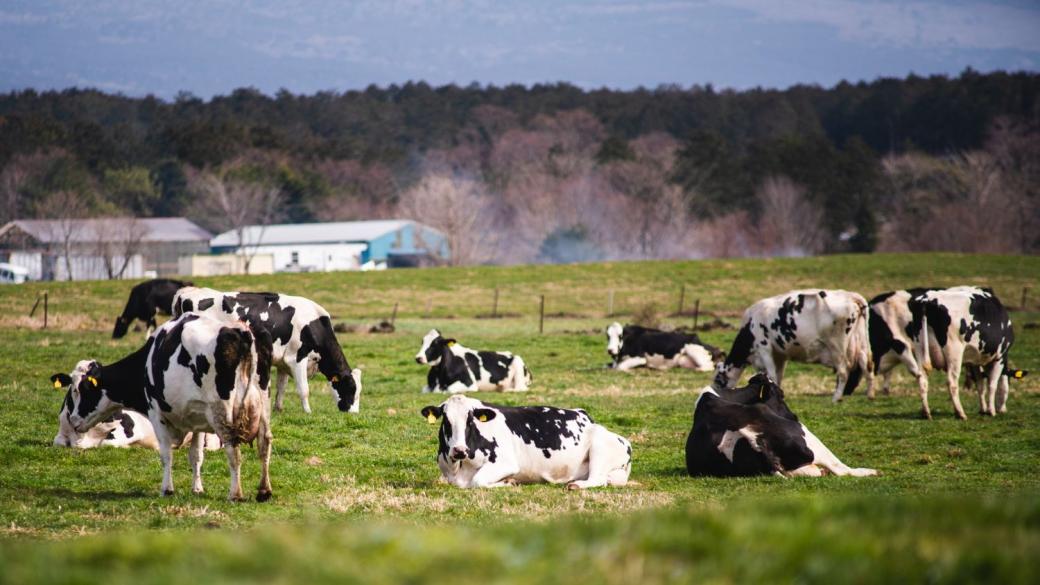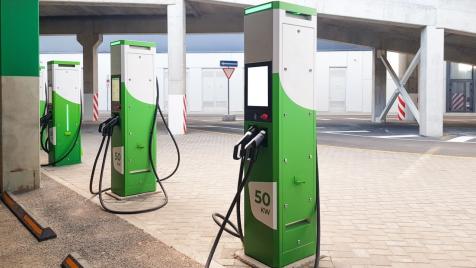Carbon credits are an additional income opportunity for farmers
In Bulgaria, this market is still in its early stages of development, but it has great potential

© ECONOMIC.BG / Depositphotos
Carbon credits have become an essential tool in the fight against climate change – at the European and global levels. And with each passing year, there is one sector that’s becoming more and more of a priority for the European Commission, due to the significant amount of emissions it releases into the atmosphere – agriculture. According to Eurostat data, by 2022 that sector is already in the Top 3 of the largest emitters, and that will, in turn, provoke more and more actions from the European Union.
Modern challenges facing agriculture and the environment require innovative approaches and sustainable practices. Regenerative agriculture practices offer a powerful solution to transform the soil into a carbon sink, which can help combat climate change. By focusing on restoring and maintaining soil health, these practices improve its natural ability to capture and store carbon. Such approaches in agriculture can contribute to building a more sustainable and resilient ecosystem. One of the options available to farmers in Europe is carbon credits. These allow the farmers to not only play a key role in combating climate change but to also reap economic benefits.
In Bulgaria, this market is still in its early stages of development, but it has great potential. Programs have already been developed to provide comprehensive support - from initial assessment and implementation of good practices to verification and certification of carbon credits. They enable farmers to unlock new revenue streams and increase the profitability and sustainability of their farms while contributing to a greener future.
What are carbon credits?
Carbon credits are financial instruments that allow organizations and companies to offset their carbon dioxide emissions by investing in projects that reduce greenhouse gases. When a company purchases a carbon credit, usually from the government, it is permitted to generate one ton of CO2 emissions.
What carbon markets essentially do is turn CO2 emissions into a commodity by setting a price for it.
When it comes to selling carbon credits within the carbon market, there are two separate markets:
- regulated – determined by “cap and trade” regulations at the regional and state level;
- voluntary – where companies and individuals purchase credits (of their own volition) to offset their carbon emissions.
How carbon credits work
The United Nations (UN) allows countries a certain number of credits, and each nation is responsible for issuing, monitoring, and reporting its annual carbon credit status. Governments allow companies to emit a certain amount of greenhouse gases before having to buy credits.
If their emissions exceed the limits, they are required to buy carbon credits. If a company buys too many credits, it can sell the excess on a carbon exchange or carbon market. This system is usually called a cap-and-trade program.
Carbon credits are created through projects such as planting trees, storing carbon in the soil (removing carbon from the atmosphere), or building wind farms (reducing emissions) in poorer countries, which receive one credit for each metric ton of emissions they reduce or remove from the atmosphere. Countries and companies can buy these credits to help meet their climate goals.
Here is an example:
Let's say two companies, Company 1 and Company 2, are only allowed to emit 300 tons of CO2 each.
However, Company 1 is on track to emit 400 tons this year, while Company 2 will only emit 200 tons.
To avoid a penalty consisting of fines and additional taxes, Company 1 can offset the emissions of 100 additional tons of CO2 by purchasing credits from Company 2, which has additional emissions space due to producing 100 tons less CO2 this year.
The voluntary carbon market was valued at about $1.4 billion last year but is projected to grow to $10-35 billion by 2030, depending on how aggressively countries around the world pursue their climate change goals.
Quality of carbon credits
One of the major challenges facing the carbon credit market is quality.
The growing market requires more efficient ways to acquire and verify carbon credits, which increases the demand for carbon-related solutions. As industries evolve, the emphasis is shifting from quantity to quality. Companies are looking for trust and options that ensure they are paying for actual carbon removed from the atmosphere, not just credits. At the same time, participating in a credible carbon farming program is a real chance for farmers to increase their income and achieve sustainability.
In this regard, the European Commission has submitted a proposal for four clear quality criteria, united under the acronym QU.A.L.ITY:
- QU (quantitative expression): carbon sequestration activities must be accurately measured and provide unambiguous carbon sequestration benefits;
- A (additionality): carbon sequestration activities must go beyond standard practices and what is required by law;
- L (long-term storage): carbon sequestration activities should ensure that the sequestered carbon is stored for as long as possible, and the risk of release should be minimised;
- ITY (sustainability): carbon sequestration activities must have a neutral impact on other environmental objectives or generate co-benefits for them.
REGULATION (EU) 2024/3012 establishing a European Union certification framework for sustainable carbon sequestration, carbon agriculture and carbon storage in products has been in force since 27.12.2024.
In Bulgaria
Many Bulgarian companies from the energy, transport and agricultural sectors are already showing interest in the carbon credit mechanism. But they, too, face the problem of quality. They do not want to just buy a certificate. Rather, they seek carbon credits generated through sustainable practices and environmental initiatives.
Therefore, it is a good idea to look for carbon traders who offer a rigorous verification, monitoring, reporting, and certification process that ensures transparency, integrity, and authenticity, providing confidence to buyers and investors.
Industry experts recommend using direct measurements and advanced monitoring techniques to quantify carbon sequestration and reduce emissions with high accuracy.
In the case of agriculture, laboratory testing of soil samples ensures an accurate assessment of carbon content and supports the implementation of practices to increase soil carbon content. Some traders offer a traceability system that allows each carbon credit to be traced back to a specific cell on the farm from which it originated, ensuring unparalleled transparency and accountability.
Translated by Tzvetozar Vincent Iolov

 *
* 